Serving up sustainability | 7 food choices to reduce water waste
In the United States, the average individual consumes approximately 2,200 gallons (8,328 liters) of water each day,1 creating a massive "water footprint." That's enough water to fill 60 bathtubs!2
A water footprint is the direct and indirect amount of freshwater used to produce all of the goods and services we consume. For example, your morning cup of coffee isn't just comprised of the water used to brew the beans, but the water used to grow, process, and transport the coffee. On average, a cup of black coffee requires 37 gallons (140 liters) of water to produce.2
Despite the importance of water to our planet and our lives, this resource is becoming increasingly threatened through events like climate change and increased human consumption. Although water scarcity is a global problem—one in three people do not have access to safe drinking water3—many individuals are not taking the necessary actions to address the issue.
One way of reducing our water footprint is to limit food waste—1.3 billion tons of food is lost or wasted each year, accounting for 30% of global food production.4
Here are seven other food-related actions that can directly reduce water consumption, some of which you can do at home!
1. Vertical farming
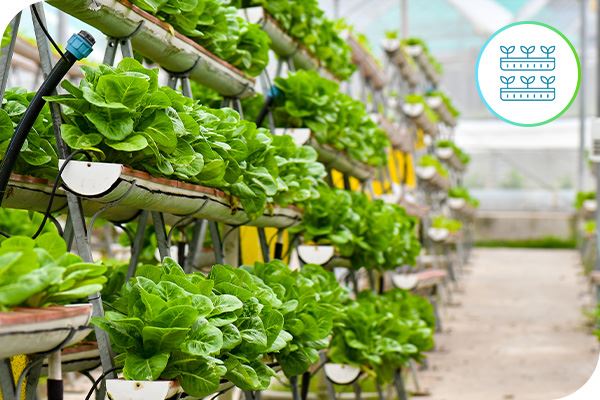
Vertical farming is an innovative solution for many of the problems associated with food production. It is a form of indoor farming for small crops using LED lighting and climate-controlled rooms to mimic ideal growing conditions for plants. The seeds are planted into cloth rather than soil, which reduces the need for water by 95%. These crops also grow twice as quickly and have larger yields due to the ideal climate conditions. Vertical farming is 390 times more productive per square foot than traditional, field-based farming.5
As impressive as this technology is, it is very energy-intensive and quite expensive to implement. Using it on large staple crops, such as corn and wheat, is not economically feasible due to size and cost constraints. However, this technique provides impressive results for small, more costly crops like tender microgreens and herbs.5
Due to high investment costs and advanced technology, vertical farming is better suited for well-developed urban areas. While not suitable for all regions and crops, vertical farms can provide access to fresh food to growing urban populations that have not traditionally had access to locally grown food. 6
2. Lab-based protein
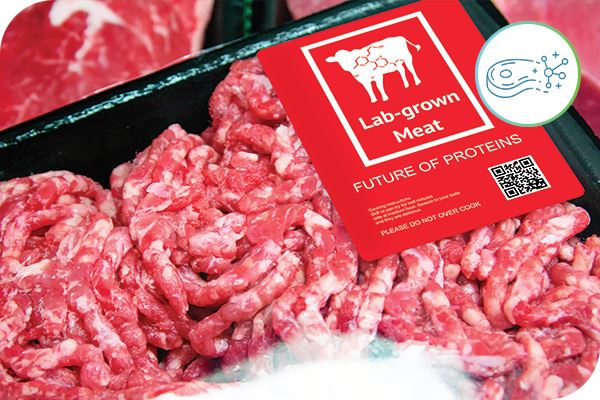
An increasingly popular innovation is the development of lab-based protein. Lab-based protein—which is being developed for beef, chicken, and fish—is real meat for human consumption made from animal muscle tissue grown inside a lab. This type of meat is produced without harming the source animal, and a single piece of muscle tissue from a cow can be replicated and turned into over 80,000 burgers.7
Each piece of meat has extremely low water and carbon footprints, as feeding and raising animals—the most costly element of meat production—is not necessary.8 While this technology is still in the very early phases, it is showing promising results. For example, lab-grown chicken has already been tested and approved for human consumption in Singapore.9
With the desperate need for water conservation, offering a real-meat alternative is an unconventional but innovative solution
3. Vegetarianism and veganism
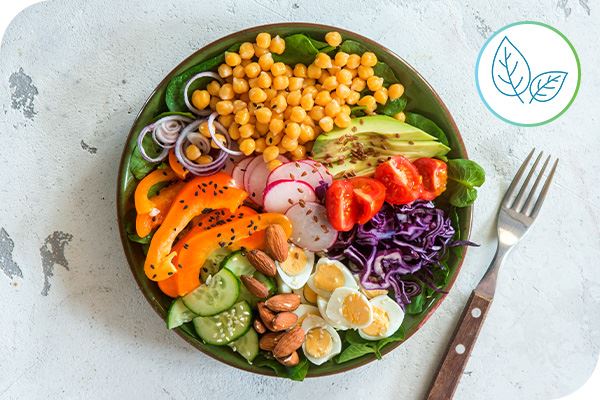
Eating less meat and dairy—or none at all—is an incredibly impactful way to reduce your personal water footprint. Studies have shown that reducing the intake of meat and dairy products leads to the most water reduction in our daily lives.
Animal products, compared to plants, require far more water to produce because it takes incredible amounts of water to raise and feed the animals. Adopting a vegetarian lifestyle can reduce your water footprint by up to 36%!10
Even without entirely cutting out meat, people can purchase dairy-free alternatives, avoid red meat, or practice "meatless Mondays" to reduce their environmental impact.
4. Drip irrigation
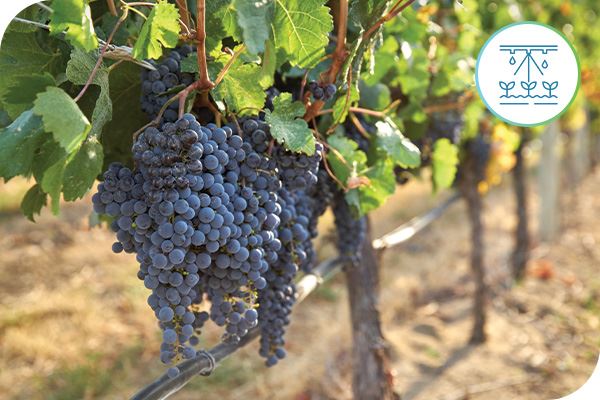
Drip irrigation is an innovative farming technique where a slow, steady drip of water is applied directly to plants' roots. These systems require 50% less water than traditional sprinkler systems, which apply water to a wide area, including between rows and other nonproductive areas.11 Drip irrigation is notable because it can be applied to large-scale cash crops,12 unlike other forms of sustainable agriculture.
Drip irrigation systems aren't just for large farms! There are plenty of tutorials online for designing one for your home garden.
5. Genetically modified crops
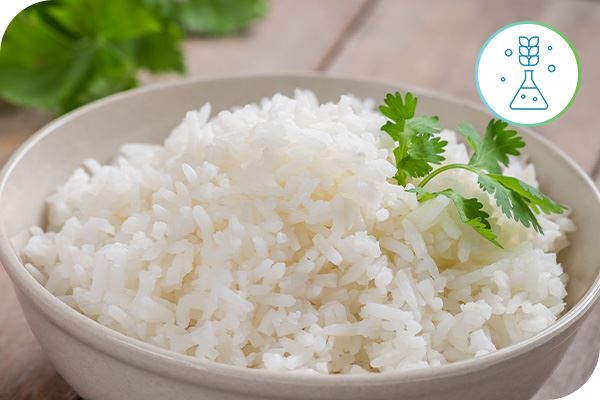
Planting genetically modified (GM) crops is a well-researched and widespread practice to reduce water consumption. The seeds for these crops are enhanced through gene modification to exhibit several desired traits, such as a larger yield or drought resistance.
For example, a genetically modified rice variety is being developed in Asia to retain water. This is significant, as conventional varieties of irrigated rice require over 1,000 gallons (4,000 liters) of water to produce a little over 2 pounds (1 kilogram) of traditional rice, making rice one of the most water-intensive crops. One rice variety being developed requires 40% less water than traditional rice.13
While GM crops can be controversial, the World Health Organization, FDA, and EPA have stated they are just as safe as any traditional crop.
6. Buy local
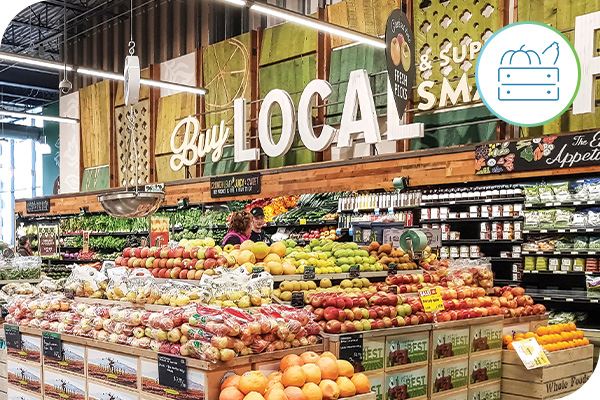
Buying non-local foods incurs a hefty water footprint, as the production of gasoline and jet fuel used for transportation is incredibly water-intensive. A single gallon (3.8 liters) of gasoline requires 13 gallons (49 liters) of water to produce.14
Conventional food travels an average of 1,500 miles (~2,400 kilometers) from the farm to your table, while many consider food produced within 100 miles (~160 kilometers) as local. Additionally, locally grown food is typically grown using less pesticides15—pesticides which can cause significant water pollution.16
There are plenty of other benefits of buying local. The food is fresher and often more nutritious, and it's a fantastic way to support your community!
7. Whole foods
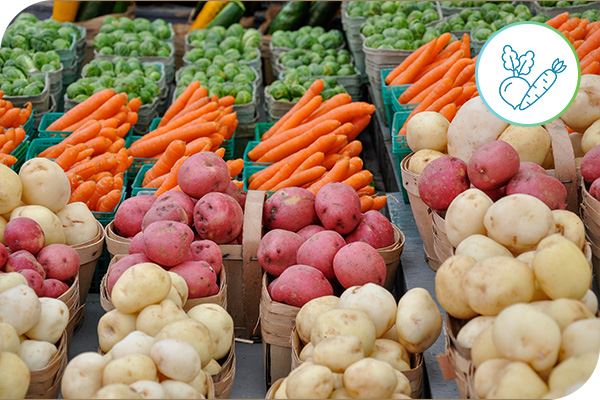
Incorporating whole foods into your diet is a great way to reduce water consumption, as opposed to buying prepackaged meals and processed foods.
Processing food includes washing and prepping the ingredients as well as packaging the product. For example, an ounce (28 grams) of potato chips requires over 7 gallons (26.5 liters) of water to produce and process, whereas an ounce of potatoes only requires 2 gallons (7.6 liters) of water.17
Eating less processed and more whole foods is a healthier option that will significantly reduce the water footprint of your grocery trip.
Conclusion
You can take various actions to reduce your water footprint, from dietary changes to investing in new food technology. Drive more widespread change by helping others become more aware of their water footprint and supporting efforts to increase access to safe water.
Begin your journey by calculating your water footprint: https://www.watercalculator.org/!

You can also make a difference by supporting these causes:
- Water Footprint Network uses the water footprint concept to promote the transition toward sustainable, fair, and efficient use of freshwater resources worldwide.
- Planet Water Foundation, a Xylem Watermark partner, brings clean water to the world's most impoverished communities by installing community-based water filtration systems and implementing Water-Health and Hygiene Education programs.
- Engineers Without Borders USA, a Xylem Watermark partner, engages skilled employee volunteers in water & sanitation engineering projects that empower communities to meet their basic human needs.
Reducing your water footprint starts with smarter choices—both in what you eat and how food is produced. See how Xylem’s food and beverage solutions help ensure quality, safety, and sustainability across the industry.
Sources:
- GRACE Communications Foundation, Water Footprint Comparisons by Country
- National Geographic, Hidden Water
- World Health Organization, 1 in 3 people globally do not have access to safe drinking water
- United Nations, Water and food security
- BBC, The clean farming revolution
- USDA, Vertical Farming for the Future
- Scientific American, Lab-Grown Meat
- UCLA, The Case for Plant Based
- BBC, Singapore approves lab-grown 'chicken' meat
- Animal Frontiers, The hidden water resource use behind meat and dairy
- Penn State, Agricultural Alternatives: Drip Irrigation for Vegetable Production
- FAO, Choosing an irrigation method
- BBC, A staple food to withstand disater
- National Geographic, Water Conservation Tips
- Columbia, How Green is Local Food?
- USGS, Pesticides in Groundwater
- Water Footprint Network, Product gallery